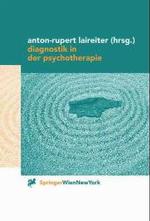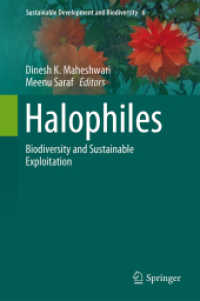Full Description
Steps to College Reading provides students extensive practice developing basic reading skills at a new value price. Designed for the most basic developmental reading course (Grades 6 ), Steps to College Reading emphasizes the idea of reading as a three-step process through a “prepare —read —respond" strategy. More assistance is provided to students with the pre-—reading step than in other texts. Pre—reading questions precede each selection. Reading passages cover a broad range of topics that will interest students and be relevant to their college work. Chapters contain numerous short pieces for illustration and practice and move to longer pieces for more sustained reading. However, because the book is designed for the more basic course, the readings are always of a manageable length for students. Steps to College Reading differs from its more advanced companion text, The Reading Context, by providing shorter and simpler explanations of key concepts; by using more visuals to accommodate alternate learning styles; by providing more vocabulary work; by covering reading rates; and by using simpler readings. This text offers more help with reading textbook material and provides full chapters on understanding the difference between specific and general statements, understanding implied ideas, reading graphics, and responding to expressive and persuasive writing.
Contents
* notes a new selection.Each chapter begins with "Prepare to Read" and concludes with "Making Connections," "`E' Connections," "Language Words," and "Chapter Review."I. INTRODUCTION. 1. Developing a Reading Strategy. Commit.Concentrate.Know About Reading.Why Have a Reading Strategy?Prepare-Read-Respond: How the Steps Connect.Prepare.Read.Respond.Reading Selections.*Elizabeth Shepard, "She Gives Them a Haven." Thomas V. DiBacco, "Dr. Franklin's Tips for Staying Well." II. VOCABULARY. 2. Using Context Clues and Building Vocabulary. Context Clues.Words with More Than One Meaning.Learning New Words.Reading Selections.*"Global Cooling." *Elizabeth Kastor, "Frozen in Time: Uncovering the 5,300-Year-Old Mysteries of The European Iceman." Word Power 1: Sorting Out Words That Are Often Confused.3. Recognizing Word Parts and Knowing Your Dictionary. Compound Words.Learning from Word Parts: Prefixes, Roots, and Suffixes.Knowing Your Dictionary.Pronunciation.Abbreviations Used in Dictionary Entries.Working with Word Meanings.Reading Selections.James M. Henslin, "Open Season: Children as Prey." *Cecelie Berry, "It's Time We Rejected the Racial Litmus Test." Word Power 2: Sorting Out Words That Are Often Confused.III. TOPICS, MAIN IDEAS, AND SUPPORTING DETAILS. 4. Separating General and Specific Statements. General and Specific Statements.Levels of Specificity.Recognizing General and Specific Statements.Recognizing Levels of Specificity in Sentences.Seeing Connections Between Sentences in Writing.Understanding Complicated Sentences.Reading Selection.Michael Scott, "In the Rain Forest." Word Power 3: Sorting Out Words That Are Often Confused.5. Moving from Topic to Main Idea. Identifying a Paragraph's Topic.Guidelines for Topics.Identifying Main Ideas.Reading Selections.*Jean Folkerts and Stephen Lacy, "TV Land versus Real Life." *Ruben Navarrette, Jr., "'American Family': Unreality TV." Word Power 4: Sorting Out Acronyms and Abbreviations.6. Working with Details, Implied Main Ideas, and Main Ideas in Longer Passages. Reading Longer Passages.Recognizing Unstated or Implies Main Ideas.The Summary."Social and Economic Structures in Ancient Egypt." "Selling Coca-Cola in Japan." Guidelines for Summary.Reading Selections.Jackson J. Spielvogel, "The Pyramids." *K. Kris Hirst, "Caral: The Frontiers of Society." Word Power 5: Sorting Out Acronyms and Abbreviations.IV. STRATEGIES AND STRUCTURES. 7. Recognizing Patterns and the Use of Transitions. Listing/Addition.Examples.Comparison and Contrast.Reading Selections.*William G. Nickels, Jim McHugh, and Susan McHugh, "Learning to Act Like a Professional." *Claire M. Renzetti and Daniel J. Curran, "Do Women Lead Differently Than Men?" Word Power 6: Sorting Out Words That Are Often Confused.8. Recognizing More Patterns and Signal Words. Ordering: Time Sequence and Process.Definition.Statement with Clarification.Reading Selections.*Martin G. Miller, "Making Sports Fun." *William G. Nickels, Jim McHugh, and Susan McHugh, "Herman Cain and Godfather's Pizza." Word Power 7: Sorting Out Words That Are Often Confused.9. Recognizing More Patterns and the Use of Mixed Patterns. Cause/Effect.Problem/Solution.Summary List of Patterns with Transition Words.Mixed Patterns.Reading Selections.*James Henslin, "Cyberslackers and Cybersleuths: Surfing at Work." *Tomoyuki Iwashita, "Why I Quit the Company." Word Power 8: Knowing Common Foreign Language Words.V. CRITICAL READING. 10. Understanding Tone and Drawing Inferences. What Are Inferences?Connotation.Figurative Language.Langston Hughes, "Dreams" Tone and the Writer's Attitude.Characteristics of Appropriate Inferences.Understanding Implied Main Ideas and Drawing Appropriate Inferences.Drawing Inferences and Understanding Implied Main Ideas in Longer Passages.Reading Selections.Suzanne Britt, "Neat People vs. Sloppy People." Langston Hughes, "Early Autumn." Word Power 9: Knowing Common Foreign Language Words.11. Understanding Graphics and Separating Fact from Opinion. How to Read Graphics.Pictures and Photographs.Diagrams.Maps.Tables.Graphs and Charts.Distinguishing Fact from Opinion.Reading Selections.Boyce Rensberger, "Graphs Can Lie, Easy as Pie." *David Krogh, "A Chance Event of Not? Anecdote, Common Sense, and Statistics In Science." Word Power 10: Knowing Some Common Scientific Terms.VI. COLLEGE SUCCESS. 12. Reading and Studying for College Classes. Reading Textbooks.Grice and Skinner, "Listening vs. Hearing." Donatelle and Davis, "Defining Addiction." Skimming and Scanning for Reading Efficiency.Curran and Renzetti, "Getting a Better Turnout: How Other Nations Run Their Elections." Writing-to-Learn Strategies.Learning from Three Textbook Selections.Curtis and Barnes, "The Signs of Life." Donatelle and Davis, "Domestic Violence." O'Connor and Sabato, "Democratic Government in the United States." Reinforcing Learning in Class.Preparing for Testing.Reading Selection.Helena Curtis and N. Sue Barnes, "Plate Tectonics and the Breakup of Pangaea." Word Power 11: Working with Terms Used in Test Directions.Appendix A. Additional Reading Selections. *Jess Tirado as Told to Susan Burton, "It's a Wonderful Night." *William Raspberry, "Speaking Two Languages, Both of Them English." *Ana Veciana-Suarez, "M&Ms' New Color? It's Just a Thin Candy Shell Game." *Charles Krauthammer, "The Greatness Gap." *Liza Mundy, "An Immodest Proposal." Appendix B. Efficient Reading. Glossary. Index.








